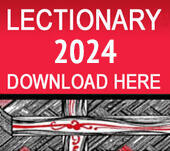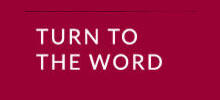“There is no longer Jew or Greek, there is no longer slave or free, there is no longer male and female; for all of you are one in Christ Jesus.”
“Kahore he Hurai, kahore he Kariki, kahore he pononga, kahore he rangatira, kahore he tane, wahine ranei, he tangata kotahi tonu hoki koutou katoa i roto i a Karaiti Ihu.”
“E le o i ai se Iutaia po o se Eleni, e le o i ai se pologa po o se saoloto, e le o i ai se tane po o se fafine; auā ua tasi lava outou uma ia Keriso Iesu.”
Galatians 3:28
Ka mea a Ihu: “He ture hou taku ka hoatu nei ki a koutou, kia aroha tetahi ki tetahi, kia rite ki toku aroha ki a koutou.”
Sa kaya ko Jisu: “Mo dou vei lomani me vaka kau sa lomani kemudou, mo dou vei lomani vaka kina.”
Jesus said: “I give you a new commandment, that you love one another. Just as I have loved you, you also should love one another.”
John 13:34
Participants at the 61st meeting of the General Synod / te Hīnota Whānui of the province of Aotearoa, New Zealand and Polynesia meeting at Waitangi in May 2014 engaged at length with the question of rightly-ordered relationships, the doctrine and nature of marriage, and the call from some to ordain partnered gay and lesbian Christians to holy orders. Their discussions culminated in an agreement that a working group would be formed to bring recommendations to the 62nd General Synod / te Hīnota Whānui, scheduled to meet in Napier in May 2016.
That agreement titled A Way Forward – He Anga Whakamua – Na Sala ki Liu became known also as “Motion 30”, and is appended to this report. In brief, it affirmed traditional marriage and commissioned the working group to devise:
“a process and structure by which those who believe the blessing of same-gender relationships is contrary to scripture, doctrine, tikanga or civil law, will not be required to perform any liturgy for the blessing of same-gender relationships, will continue to have integrity within the Church, and will remain compliant with the parliamentary legislation within any relevant jurisdiction;
“a process and structure by which those who believe the blessing of same-gender relationships is consonant with scripture, doctrine and civil law may perform a… liturgy for blessing same-gender relationships in a manner which maintains their integrity within the Church, is compliant with the parliamentary legislation within any relevant jurisdiction, and can remain in communion under scripture, doctrine and law; including
“a proposal for a new liturgy to bless right ordered same-gender relationships;
and
“a process and legislation (whether church or parliamentary) by which a new liturgy to bless right ordered same-gender relationships may be adopted.”
The group was also asked to report on the implications of its recommendations on the theology of ordination (and consequent requirements for ordination), and on the theology of marriage. The direction that General Synod / te Hīnota Whānui of 2014 upheld the “traditional doctrine of marriage”, which it defined as being “between a man and a woman… life-long and monogamous” precluded any provision being made for same-sex couples to be married in Anglican churches.
The working group was formed in May of 2014, and began its work immediately. Some were priests, some bishops, some lay; several had a legal background. All were Anglicans with the desire to see the Church remain united despite differences in response to the challenges presented by same-sex relationships and the Christian men and women most affected by the Church’s regulations.
The members of the working group believe the recommendations contained in this report constitute a complete and workable response to the tasks set out in A Way Forward – He Anga Whakamua – Na Sala ki Liu. While working group members agree that they have met the brief given, they were not and are not of one mind on many issues. Their manner of proceeding in unity without unanimity was at times arduous, but their hope is that their work will inform the deliberations of General Synod / te Hīnota Whānui 2016 in a way that offers the guidance that was sought from them, and a clear understanding of the options the Church can now consider.
The working group does not advocate for or against adoption of the recommendations made in the report. Rather, it offers the recommendations as the appropriate reforms to consider. This report explains the theology on which the recommendations are based and how General Synod / te Hīnota Whānui might see the report as being compliant with our constitution (Te Pouhere), and the Church of England Empowering Act 1928. The explanations are not necessarily the views of every individual member.
The Rev’d Dr Andrew Burgess
Mr Bruce Gray QC (Chair)
The Ven Sepiuta Hala’api’api
The Rt Rev’d Dr Helen-Ann Hartley
Ms Jacqui Chesley-Ingle
Mr Jeremy Johnson
The Very Rev’d Jo Kelly-Moore
Mr Graham Miller
The Rt Rev’d Te Kitohi Pikaahu
Ms Moka Ritchie
The Rev’d Don Tamihere
Mr Fe'iloakitau Tevi
The Rt Rev’d Jim White

















Comments
Log in or create a user account to comment.